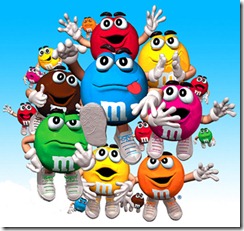As we begin the new year, I have high hopes for several changes in the administration, timing, and implementation of standardized physics exams from both the College Board and the NY State Board of Regents. Although I believe the likelihood of all of these happening in 2011 is quite slim, I maintain that all three are reasonable and feasible.
#1 Finalize Plans for AP-B Physics
The College Board’s decision to redesign the AP-B course deeply effects course sequencing at Irondequoit High School. We’ve heard talk of the split for several years now. A seminar describing the changes was presented at last summer’s national AP conference in Washington, D.C., where the presenter and College Board representative stated “it’s a done deal, the only question is timing.” We were told that the changes would be implemented in the 2011-2012 school year or 2012-2013 school year. That’s fast! We were promised more detailed information by last fall. And we’ve heard nothing beyond a New York Times article which mentions potential changes in the 2014-2015 school year.
The preliminary redesign information presented at the 2010 AP conference indicated the course would be split into AP-1 and AP-2, where AP-1 is designed as a first-year course, and AP-2 is the more detailed, deeper second-year course. The courses could be taken concurrently, although this was strongly discouraged during the presentation.
Actual implementation will have profound consequences for our district. First, our school currently offers three levels of physics. Regents Physics for juniors or seniors (a college-prep course based on NY state standards, equivalent to a typical Honors Physics course); AP-B, which can be taken as a first-year course by advanced students or as a second-year course following Regents Physics; and AP-C Mechanics and E&M, which can be taken by seniors who took AP-B as a first-year course.
Our concerns center around what the added AP-1 and AP-2 offerings will do to our other programs. As a NY state school, we are highly encouraged to offer Regents Physics, consistent with state standards and a formal state-administered final exam in June. Splitting the AP-B course into a two-year sequence could potentially damage our AP-C course, unless we replaced our current AP-B offerings with a combined one-year AP-1 and AP-2 (which is making the problem of the AP-B course having too much information in too little time even worse!). Or, we could combine AP-1 and Regents Physics together although the defined curricula don’t make for a smooth overlap, and offer AP-2 in place of our current AP-B course. Unfortunately, this makes it difficult for our enterprising students to jump right into AP-2 prior to AP-C, which means we would likely need to add yet another physics course, AP-12, as a first-year course for those students who want to take AP-C as a second-year course. As you can see, this gets complicated in a hurry.
The bottom line — this change is going to take some time and require an overhaul of our entire science program and sequencing. College Board, we need a timeline, we need details, and we need sample exams.
#2 Eliminate the NY State Regents Physics Exam
As a teacher, I want as much information as I can get about my students. I use assessment to plan instruction. I use assessment to grade. I use assessment to let me know what I’m doing that’s working and what needs refinement. The current physics Regents exam and curriculum, however, doesn’t meet my needs for a culminating final exam, nor do I feel it adequately assesses my students’ understanding of physics.
The exam is largely a test of how well you can use your formula sheet (known as the reference table). If you can write down "givens," "finds," and pick a formula, you can plug and chug your way to a fairly high score without demonstrating true understanding. Not only that, but typically this is the last exam given after a week of exams, and in some cases it actually falls on a date after our school’s graduation. Most of the students taking the course have already been accepted into college, don’t need to pass the course to graduate, and therefore have no vested interest in doing well on the exam. Yet our department goals focus on students scores on this exam.
Further, topics included in the curriculum are addressed at inconsistent depths. Mechanics coverage is adequate, but electricity and magnetism, the precursors to so many aspects of our daily lives in the 2000s, is quite inconsistent. Students learn basic electrostatics as well as series and parallel circuits, then move into fundamentals of magnetism and basic EM induction. However, past exams indicate VERY few magnetism questions… less than one question every two years! Waves are introduced, leading into optics, but optics is quite incomplete. Lenses are not addressed, but refraction and diffraction are (although only qualitatively).
Most disturbing, however, is the final unit of the course. Where you would expect to introduce basic atomic / nuclear physics and applications, the curriculum dictates a study of the Standard Model. Not only is this topic inconsistent with learning "fundamentals" first, but the level at which it can be taught with the students’ background to this point in the course leads to rote memorization of a few facts and learning to copy answers off the formula sheet. Teaching for Understanding? Not a chance.
My wish for 2011 would be to see the state eliminate the Regents Physics exam, a consideration that has been rumored in light of state budget issues. There are plenty of standardized exams already available if we see a need for comparing students across classes, districts, and regions.
Instead, allow us more freedom within our districts to differentiate to student needs and interests. Of course, fundamental concepts need to be covered in an introductory course — mechanics, energy, E&M, waves, atomic physics, and so on — but within these core areas, give me the freedom and time to focus on student needs and interests appropriately. Are the students excited about projectile motion? Let’s take the time to go further, learning how to apply concepts to real-world situations, making predictions, verifying, and including real-world parameters such as wind and drag. Students want to know about relativity and special relativity? Take some time to explore time dilation, length contraction, space-time, and point of view. Students are excited about electronics — expand E&M to include more than just resistive circuits… introduce diodes, transistors, integrated circuits, even design and processing!
There are so many areas students are interested in. Let’s eliminate an unnecessary exam that creates excessive paperwork, wastes money, and provides minimal qualitr5fy information about students while simultaneously providing teachers the opportunity to differentiate while encouraging engagement and enthusiasm. In addition, eliminating the exam would provide an inviting avenue to replace our school’s current Regents Physics course with AP-1 physics, which is being designed to allow time for deeper exploration of selected topics.
#3 Offer AP-C Mechanics Exam in Winter
Yet another wish for the College Board. I teach AP-C physics (both mechanics and E&M) as a year-long course. Roughly 80% of AP-C students in the country take only AP-C Mechanics. Therefore, they spend the year preparing for their single exam in the spring, which they take as soon as they complete the course while the material is fresh.
The 20 percent of AP-C students taking both mechanics and E&M exams take the exams back-to-back on the same day, with a couple minutes of breather between the tests. They are therefore at a disadvantage because their mechanics course ended several months earlier — the material isn’t as fresh.
I would love to see the College Board offer a winter AP-C Mechanics exam, allowing us to complete this exam while the material is fresh in students’ minds before moving into E&M. Further, this would benefit students who are on waiting lists to the most prestigious colleges… a 5 on the AP-C Mechanics exam could help set them apart from other applicants, and results could be available in time for colleges to use the information in their final decision-making process.
College Board, please consider offering the AP-C Mechanics Exam in the winter. (Yes, I know this is not likely to happen due to the cost incurred in creating another exam and scoring it, especially given the small number of students who would take it, but I have to think there’s a way this could be offered in a digitized format to protect exam integrity and reduce costs.)
Will It Happen?
There you have it, three wishes for administrative physics exam changes in the year 2011. Are they likely? Some more than others. I believe we will see more information from the College Board about the AP-B redesign, but I’m not holding my breath for any promised dates. I don’t believe the College Board sees any issue in the timing of the AP-C Mechanics Exam, so the first step is to at least communicate this desire. As for elimination of the Regents Exam, If state budget funding does push this to fruition, I believe there’s a strong chance the AP-B course split may push this issue on its own, although, once again, timing is uncertain.
What do you think? What changes are you envisioning in the coming year?
 Currently, there are several Regents Physics review books available which are quite well done and that I’m very fond of personally. Over the past few years, I’ve pointed students toward several of these books, and even supplied them for my students in some cases. What students have reported, however, indicates that in many cases they quickly become overwhelmed with the size and layout of the review books, especially given the time constraints they have for review before the exam is given. When most of these books contain a minimum of 400 pages, students begin to view the review process as a daunting endeavor, and therefore never begin. When the shorter books (~ 250 pages) contain hundreds of problems but no included solutions, students see a workbook instead of a resource, and become frustrated when they can’t check their answers and obtain immediate feedback. Regardless of the reason, if students don’t engage in the review book, however well written and complete it may be, its effectiveness is extremely limited.
Currently, there are several Regents Physics review books available which are quite well done and that I’m very fond of personally. Over the past few years, I’ve pointed students toward several of these books, and even supplied them for my students in some cases. What students have reported, however, indicates that in many cases they quickly become overwhelmed with the size and layout of the review books, especially given the time constraints they have for review before the exam is given. When most of these books contain a minimum of 400 pages, students begin to view the review process as a daunting endeavor, and therefore never begin. When the shorter books (~ 250 pages) contain hundreds of problems but no included solutions, students see a workbook instead of a resource, and become frustrated when they can’t check their answers and obtain immediate feedback. Regardless of the reason, if students don’t engage in the review book, however well written and complete it may be, its effectiveness is extremely limited. Target publication date for the APlusPhysics: Your Guide to Regents Physics Essentials is May 2011. Instructors interested in learning more and/or reviewing the text may contact the publisher directly by e-mailing info@sillybeagle.com or through the APlusPhysics website.
Target publication date for the APlusPhysics: Your Guide to Regents Physics Essentials is May 2011. Instructors interested in learning more and/or reviewing the text may contact the publisher directly by e-mailing info@sillybeagle.com or through the APlusPhysics website.


